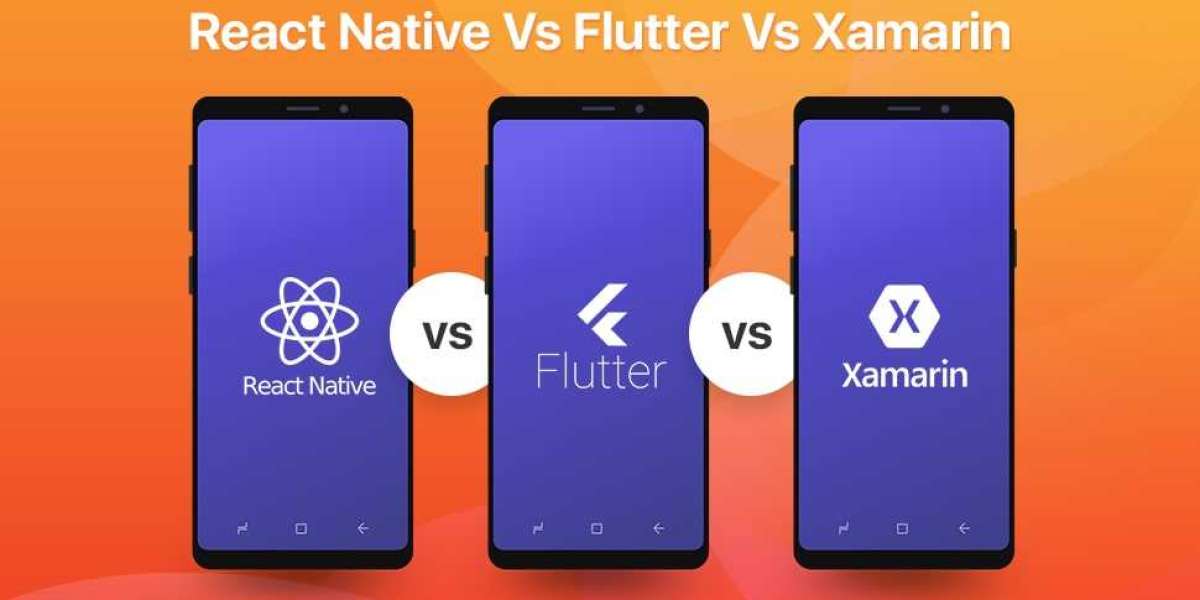In the rapidly evolving landscape of mobile app development, choosing the right framework is crucial for the success of your project. Flutter, Xamarin, and React Native are three leading contenders in the realm of cross-platform development, each offering unique features and capabilities. However, selecting the most suitable framework requires careful consideration of various factors such as performance, development experience, ecosystem, and community support. In this article, we'll navigate the landscape of mobile app development and provide insights to help you make an informed decision between Flutter, Xamarin, and React Native.
Understanding Flutter:
Flutter, developed by Google, is an open-source UI toolkit for building natively compiled applications for mobile, web, and desktop from a single codebase. Let's delve into its key features:
1. Performance and Speed:
- Flutter boasts exceptional performance and fast rendering speeds by compiling Dart code directly to native machine code, ensuring smooth animations and responsive UIs.
- Its "hot reload" feature facilitates quick iterations, allowing developers to see changes instantly without restarting the app.
2. Rich UI Experience:
- Flutter offers a rich set of customizable widgets and UI components, enabling developers to create stunning, native-like interfaces across platforms.
- Its widget-based architecture empowers developers to build expressive UIs with ease, supporting animations, gestures, and custom styling.
3. Growing Ecosystem:
- Flutter has a rapidly expanding ecosystem of packages, plugins, and community support, providing developers with a wide array of tools and resources.
- Frameworks like FlutterFire facilitate seamless integration with Firebase services, while plugins extend Flutter's capabilities for tasks like navigation and state management.
Exploring Xamarin:
Xamarin, acquired by Microsoft, is a cross-platform framework for building native mobile apps using C# and the .NET framework. Let's examine its prominent features:
1. Native Performance:
- Xamarin enables developers to build fully native applications for iOS, Android, and Windows using a single codebase, leveraging platform-specific APIs and capabilities.
- Its architecture grants direct access to native APIs, ensuring optimal performance and user experience across different platforms.
2. Unified Development Environment:
- Xamarin provides a unified development environment with Visual Studio, enabling developers to write, debug, and test code seamlessly across platforms.
- Integration with Microsoft's ecosystem, including Azure services and .NET libraries, simplifies backend integration and cloud-based functionality.
3. Strong Community and Support:
- Xamarin boasts a large and active community of developers, offering valuable resources, documentation, and support forums.
- Microsoft provides extensive documentation, tutorials, and training materials for Xamarin, along with dedicated support channels for enterprise users.
Comparing React Native:
React Native, developed by Facebook, is a JavaScript framework for building native mobile apps using React. Let's explore its notable features:
1. Code Reusability:
- React Native enables developers to write code once and deploy it across multiple platforms, including iOS, Android, and web, using a single codebase.
- Its "learn once, write anywhere" approach leverages React's declarative UI paradigm and component-based architecture for efficient code reuse.
2. Fast Development Iterations:
- React Native facilitates a rapid development cycle with its "hot reload" feature, allowing developers to view changes instantly and iterate quickly during development.
- Its extensive ecosystem of third-party libraries and plugins accelerates development by providing pre-built solutions for common tasks and functionalities.
3. Vibrant Community and Ecosystem:
- React Native boasts a vibrant community of developers, contributors, and companies, offering extensive documentation, tutorials, and resources.
- The React Native community actively maintains a vast ecosystem of open-source libraries, tools, and plugins, enabling developers to extend and customize their applications with ease.
Making the Decision:
When choosing between Flutter, Xamarin, and React Native, consider the following factors:
1. Project Requirements: Evaluate your project's specific requirements, goals, and constraints, such as performance, scalability, and development timeline.
2. Developer Expertise: Assess your development team's skillset and familiarity with programming languages, frameworks, and tools.
3. Ecosystem and Support: Explore the availability of third-party libraries, plugins, and community support for each framework, along with the level of documentation and resources.
4. Performance and User Experience: Consider the performance, user experience, and native capabilities of each framework, including factors like App Development size, startup time, and platform-specific functionality.
By carefully evaluating these factors and comparing the features of Flutter, Xamarin, and React Native, you can make an informed decision that aligns with your project's requirements and objectives. Whether you prioritize performance, developer productivity, or platform flexibility, each framework offers unique advantages and opportunities for building high-quality, cross-platform mobile applications.



